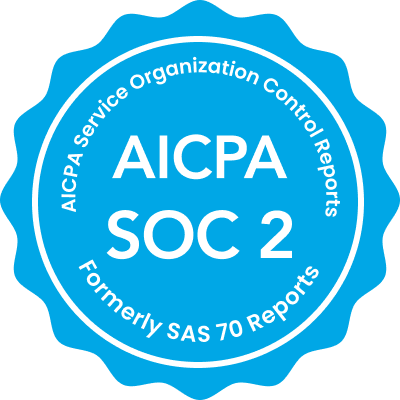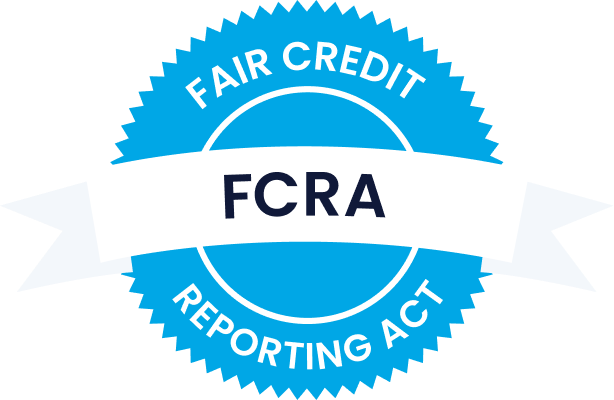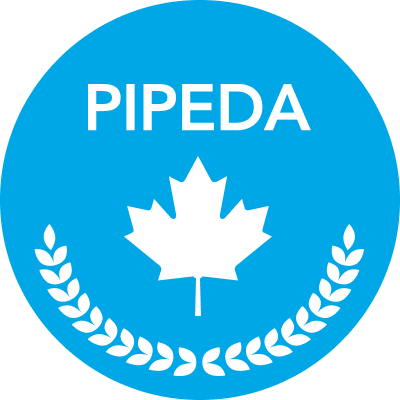For new landlords still familiarizing themselves with what they need for vetting, approving, and ending a tenancy in Alberta’s rental market, this guide will tick off all the do’s and don’ts, as well as all the required Alberta rental agreements and documents, you’ll require.
Keep in mind that each province may have unique regulations. Renting your investment property to the right tenant can be accomplished more easily with these tips.
Introducing Alberta’s rental market
Here’s a complete and comprehensive list of documents you’ll need while vetting a potential renter and managing your rental properties in Alberta. It will help property owners and landlords stay organized, especially for the uninitiated, whether renting one property or multiple units. The more landlords know about province-specific rules and essential paperwork needed, the more time they will have to focus on other important aspects of managing a rental property, including:
- Reducing vacancy rates
- Minimizing maintenance costs
- Generating extra income
Let’s break down all the things a successful landlord should consider when embarking on their property manager journey.
Checklist for Alberta rental agreements & documents
Property managers will need the following Alberta rental agreements and documents during the screening process, after the rental application is approved, during the tenancy, and to end the tenancy.
- Residential Rental Application – A landlord needs a standard application form to confirm your identity, verify your sources of income, check your rental history, obtain consent for credit checks, and more.
- Residential Tenancy Agreement – A written agreement is important because tenants can break verbal agreements, shorten the agreed-upon long-term occupancy, overstay their residency, or miss rent payments. A Residential Tenancy Agreement outlines clear expectations from both parties.
- Move-in/Move-out Inspection Report – An inspection form for landlords and tenants will point out any damages to the residence while it is vacant and before tenants move in. A written inventory of pre-existing damage to the property will help landlords determine whether a tenant will receive their deposit back in full.
- Statement of Account – The statement of account or security deposit form will help ensure that the landlord’s costs of repairs to any damages on the premises are covered.
- Notice of Entry – With the exception of an emergency, a notice of entry form alerts the tenant that a landlord will need to enter the premises. Some reasons for giving a notice of entry form would include inspecting or making repairs, an appraisal on a rental property, or pest control.
- Notice of Rent Increase – After 365 days have passed since the start of the tenancy or the last rent increase, landlords must submit a notice of rent increase form to the tenant if they plan on increasing rent. The amount of notice required varies and depends on the tenancy terms.
- Pet agreement – It is up to the landlord if they will allow pets to live on the premises. A written pet agreement will avoid any confusion or conflict between the tenant and landlord.
- Documents to end a tenancy
- Landlord’s Notice to Tenant: Termination of a Periodic Tenancy – A periodic tenancy has a start date but no end date. To end a periodic tenancy, a landlord or a tenant must give notice––this form is for landlords to submit to tenants.
- Tenant’s Notice to Landlord: Termination of a Periodic Tenancy – A periodic tenancy has a start date but no end date. To end a periodic tenancy, a landlord or a tenant must give notice––this form is for tenants to submit to landlords.
- Landlord’s Notice to Tenant: Termination of Tenancy for Substantial Breach – If a tenant commits a series of breaches, a landlord will need to submit this form to a tenant if they choose to terminate the tenancy. This notice must be served on the tenant at least 14 days before the day that the tenancy is to terminate.
- Landlord’s Notice to Tenant: 24‑hour Notice of Termination of Tenancy – A landlord may submit a 24-hour notice of termination form if the tenant has physically assaulted anyone on the premises or caused significant damages to the rental space or property.
- Landlord’s Notice to Vacate to Person(s) who are Not Tenants – A landlord can give anyone not listed on the tenancy agreement occupying the residence a notice to vacate.
Alberta does not offer rent control. However, if you live in a rent-controlled province like Ontario, you may be able to increase the rent by giving notice.
As a successful landlord, you want to protect your property, establish a trustworthy landlord-tenant relationship, and ensure you’re selecting candidates who will pay their rent on time. Screening prospective tenants properly is essential for tenancies to run efficiently.
What application documents can landlords request
The application process helps landlords get to know the applicants. Are the future tenants reliable? Do they have the monthly income to afford the rent, and how does their credit history check out? There are many questions to consider, and an application can help you narrow down the pool of prospective tenants.
Residential landlords can ask applicants for the following basic information on the application:
- First and last name
- Date of birth (DOB)
- Driver’s licence number
- Social insurance number (SIN) (optional for the applicant to provide)
- Co-applicant (and any other occupant) information
Landlords can also legally request the following items with the consent of the prospective tenant:
Additional questions landlords can ask:
- Do you smoke?
- Do you own a car?
- Do you have pets?
- What is your monthly income?
- Have you ever declared bankruptcy?
- Are you willing to submit to a background check?
Here’s a full list of suggested questions for landlords to screen tenants.
What landlords should not ask
It’s common to ask potential tenants basic personal questions during the showing of the property. When engaging with potential renters, stick to providing details about the amenities and features of the rental.
Landlords should avoid discriminatory questions under the Canadian Human Rights Act. It’s unlawful to ask questions regarding:
- Religion
- Marital status
- Age
- Ethnicity
- Nationality
- Political preferences
- Sexual orientation
- Their plans on having children
Furthermore, landlords should avoid advertising a rental property that strives to appeal to a younger, specific age bracket, race, nationality, or religious affiliation. The Canadian Human Rights Act aims to ensure all individuals have an equal opportunity for work and accommodation.
Types of Alberta rental agreements
There are two types of rental agreements: fixed-term and periodic agreements. A notice to end the residence is not required in a fixed-term rental agreement. Ensure the tenancy agreement includes the specific dates for the entirety of the occupancy.
In contrast, a periodic tenancy agreement allows no definitive end date; therefore, the landlord or renter must give written notice to end the occupancy. Virtually all periodic terms are month-to-month. They can also be week-to-week. The term set really depends on what the landlord’s preferences are at the time of the rental agreement.
Required documents: before, during, and after the tenancy
When a potential renter agrees to rent a unit or property from a landlord, both parties enter into a binding contract. The residential tenancy agreement should be in writing, whether digital or print, so all parties have a record. If any disputes should arise before, during, or after the termination of the tenancy, both the tenant and landlord can refer to their written agreement.
Before the start of tenancy
The Tenancy Agreement is your original agreement with your soon-to-be tenant. The written contract contains everything from what’s included in the rent for renters, like gas, water, trash, laundry, refrigerator, and confirmation of pet deposits and terms that might apply to the tenant. It also can include the security deposit, occasionally called the damage deposit.
Lease Addendums include a modification in the original lease. If there are updates to the premises requiring tenants to park in a different location, or a tenant has a new pet or any other related change, the tenant should acknowledge it in writing.
If you use a property management company or attorney, they will handle all of your residential property needs. Many real estate agents also work in property management.
It’s common for a tenant to receive a move-in inspection sheet to inventory any damages on the property upon moving in. This way, when they move out, the damages are recorded and nothing is deducted from their deposit.
During the tenancy
Residential landlords can use Rent Increase/Decrease Lease Addendums after 12 months have passed since the renter signed the original Residential Tenancy Agreement.
A landlord dealing with unpaid rent can use their discretion on how to handle each case-by-case circumstance.
Ending the tenancy
Unless the rental property is suddenly deemed uninhabitable due to an unexpected circumstance, tenants are bound to all terms listed in the residential tenancy agreement or lease addendum, including the agreed-upon rent and payment due date.
When the tenant’s rent exceeds their new monthly income or they are delinquent on paying their rent on time for whatever reason, there is a list of forms that landlords should have access to if they decide to evict a bad tenant.
Other reasons landlords can opt to evict a bad tenant include the following challenging situations:
- Breaking rental agreement terms – violating the terms of the rental agreement, which can include failure to pay rent or keeping unauthorized pets.
- Disorderly conduct on the premises – disturbing, endangering, or assaulting anyone residing on the premises.
- Damaging anything on the premises – severe damage anywhere on the premises.
- Endless noise complaints – excessive noise complaints reported by other tenants, excluding normal day-to-day activities, that tenants continually disregard can result in eviction.
FAQ: What Alberta rental agreements and documents are required?
It is not required, but we highly recommend all landlords conduct their own inspections to have a record. You can use this Move-in/Move-out Inspection Report to complete your inspection.
For nonpayment of rent, make payment arrangements with the tenant. Failing compliance with these arrangements, you have two options. First, if this is a recurring problem, use existing, tenant-related paperwork and file an eviction notice. If this is the first time that this has happened, the second option is to issue a 14-day eviction notice that the tenant has breached their lease agreement. A tenant must be given the notice at least 14 clear days before the tenancy is to end. This means the day the notice is given and the day the tenancy ends don’t count as part of the 14 days. This creates a papertrail you can use later to file a hearing with the Residential Tenancy Dispute Resolution Service (RTDRS) if needed. If ever in doubt, seek legal advice.
The landlord must give three months’ notice, while the tenant can give one month’s notice.
Our final thoughts
Being a landlord can become a full-time job. Keeping a central database of rental documents can reduce some of that burden and save you from a time-consuming search.
You can also securely store, access, and share any necessary rental forms with a digital vault. This protects important information related to your tenants and helps you efficiently manage your rental properties. Discover more benefits of using online tools like tenant screening with SingleKey.





